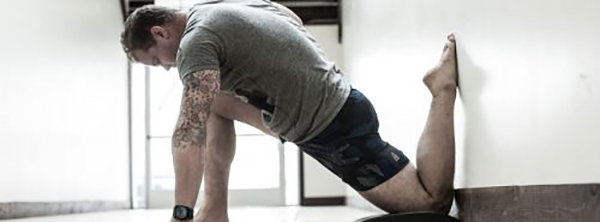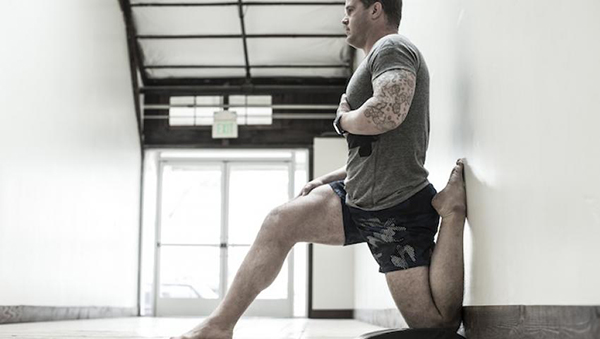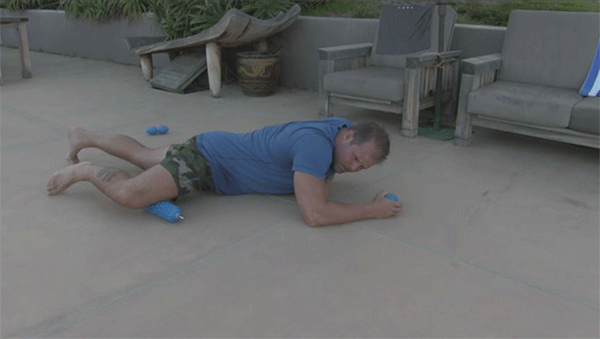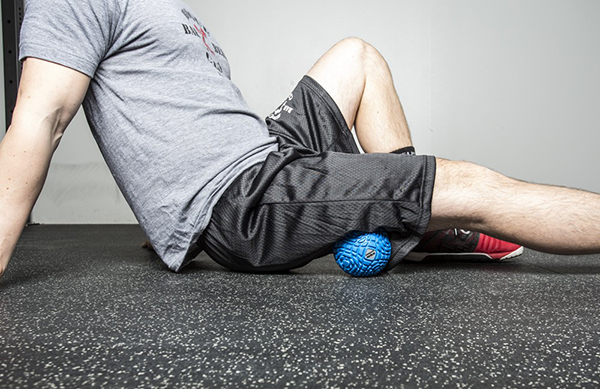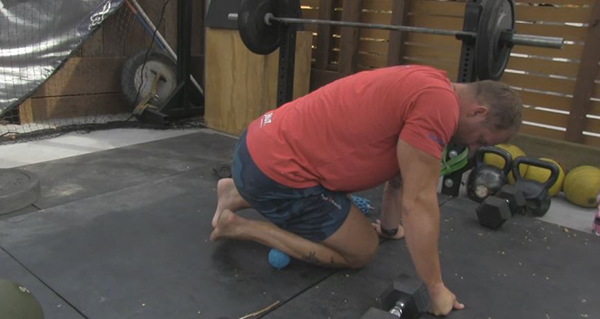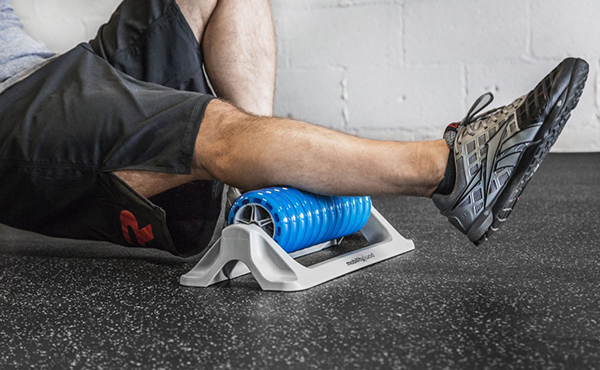Lower back pain might be the most common orthopedic ailment but sore knees aren’t far behind. The knee is designed to work just fine for life, but poor standing, walking, running and jumping mechanics, too much sitting and biomechanical compensations for old injuries combine to bedevil the joint.
Or, should we say, the soft tissues around it. When the knee gets ticked off, we automatically assume the problem lies in the joint itself. And yet the majority of knee-related issues originate in stiffness in the tissues upstream and downstream. By mobilizing these we can feed slack into the neuromuscular system, relieving the tension on the knee and pain that results.
I asked Dr. Kelly Starrett to give us his top 5 moves to sort out those creaking knees. Spend at least two minutes per side on each one, breathe calmly from your diaphragm and back off if you feel any nerve pain. You’ll need a tennis or lacrosse ball to work the muscles, or a mobility tool.
Couch Stretch
Often, tightness in the soft tissues surrounding the front of the hip causes tugging on the structures lower down, contributing to knee pain. The couch stretch helps overcome this issue by putting the hip into full extension.
Crouch on all fours facing away from a wall. Put your left shin flush against the wall, with your foot turned slightly inward. Place your left hand slightly outside your left knee, with your left arm locked out. Your right foot should be flat on the floor. Push your left hip toward the ground, while squeezing your glutes (see: butt muscles) to protect your lower back.
Stay on tension for 10 to 15 seconds, then relax for a couple. Repeat for at least a minute.
Then try to pull your torso upright so you’re in the “up” position. Again, squeeze your glutes to keep the lower back protected. Contract for 10 to 15 seconds, relax for a couple and repeat for at least a minute. Switch sides.
Getting to the top position and being able to hold it shows normal baseline hip function, but many of us are so tight that we can’t reach it. If this is you, work on the bottom position for several sessions, add in quad smashing and keep re-testing. Use a bench, box or your couch to steady you until you can reach the upright position unsupported. SEE 2:35 & ON IN THIS VIDEO
Quad Smash
If your quads are tight it’s like putting a vise clamp on your knee. It’s time to de-gristle those tissues!
Place a mobility ball or roller just above your left knee. Slowly roll your leg across the ball/roller, from the inside to the outside. You can also pull your leg up behind you to create a different stimulus, or stay still and contract and relax the muscles against the ball/roller.
Work all the way up the quads until you reach the point where your quads reach the hip. If you find a sticky spot camp out there until it loosens up. SEE 2:40 & ON IN THIS VIDEO
Hamstring Tack and Floss
If your hamstrings are matted down, chances are they’re going to start pulling on the back of your knees. Liberate this powerful muscle group,:
Sit on a plyo box or chair and place a lacrosse ball where your butt meets the hamstrings. Slowly move the tissues from side to side across the ball. You can also extend and flex your leg, or contract and relax the hamstrings against the ball. Work all the way down until just above the knee. SEE 2:42 & ON IN THIS VIDEO
Shin Smash
Tightness along the front of the lower leg is an often overlooked contributor to knee pain. Do something about it.
Getting on all fours and placing a lacrosse ball on the outside of the shin bone, just below the knee, slowly move your leg to the inside, so the ball moves outward over the soft tissues. Work all the way down this seam to the foot, using a bigger ball as needed. SEE 3:52 & ON IN THIS VIDEO
Gastroc/Soleus Liberation
Sure, the foot on the wall move can provide some relief for the back of the lower legs, but tissue manipulation with a mobility tool provides more lasting change.
Place the very top of your calf on a roller and slowly move the calf across it. Work your way down until you reach the ankle. You can also take up the slack with the roller by twisting it and then pulling your foot towards you. Increase the stimulus by placing the inactive leg on top of the active one. SEE 4:15 & ON IN THIS VIDEO

